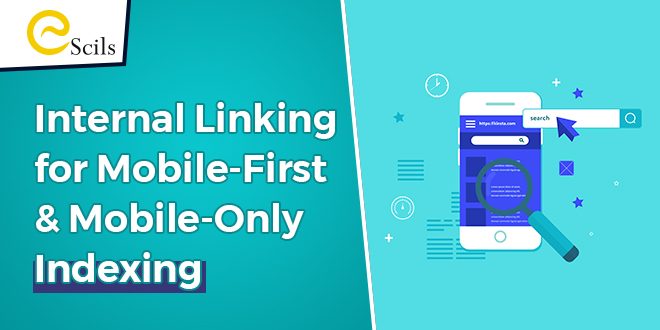There has been much information about Google’s original mobile-first indexing; it can be challenging to maintain. In this article, you will learn about the latest developments and Google’s pursuit of mobile usability, what it means to have the same mobile and desktop experience, how to meet Google’s needs for best practices for mobile devices, and more.
Some news that appeared on Pubcon on October 13, 2016, will once again affect the future of search. In his keynote speech, Google Trends analyst Gary Elis revealed that the first mobile indexing would occur not far away. Google’s index increasingly focuses on mobile pages, and desktop pages are phased out when mobile alternatives are available. When it was announced, there was a lot of speculation about what the search would mean. But now that the SEO community has some time to absorb the news, we have a clearer view of what is happening and why, and we have obtained more specific information from Google.
Are you on mobile-first indexing?
Google announced the first mobile index change in 2016. Since then, they have consistently promoted it to more and more websites. Google expects to release a mobile index for all websites by March 2021. It means that its index is only moving. Therefore, ac the most recent information from Google in March 2020, 70% of the websites have transferred to the initial mobile index.
You can check if you are in 70% of the Google Search Console. Go to “Settings,” and it will tell you when your site has been mobilised for indexing. You can also select a railway in the “About” section.
Why is Google Moving Towards a Mobile-first Index?
With the development and growth of the mobile phone and smartphone markets, it makes sense to focus search engines on this device. Google recognises the advantages of mobile devices and tries to bridge the gap between mobile device users and the initial desktop indexing system. The first mobile index aims to eliminate trips by unconnected mobile users.
With most people now using mobile devices, Google prioritises mobile pages to provide consumers with personalised services. Generally speaking, Google released the first mobile phone index.
What does Mobile-first Indexing Mean?
The initial form of the mobile index For indexing and ranking, Google mainly uses the mobile content version. Historically, the index primarily used the desktop version of website content to assess the relevance of user interviews. Since most people now use mobile devices to access Google search, Googlebot mainly crawls and indexes smartphone agents on the page.
In the past, Googlebot primarily used the desktop version of the website to assess the relevance of pages for search queries.
It will not cause any problems for many companies because the accepted version of the desktop site for mobile visitors does not modify the actual material it provides. However, when a website offers separate desktop and mobile versions, few factors are to consider.
Suppose you are still one of the few companies that do not have a mobile website. You may think that your search rankings on desktop and mobile searches will have a negative impact.
Mobile-First Indexing Rollout
At the end of 2017, Google said that it would gradually start indexing mobile devices. In March 2018, Google announced that it was expanding its implementation and preparing web pages. Three years later, not all sites have switched to mobile indexing. Google stated in June 2020 that although most websites have been indexed for mobile devices, there are still many websites that are not. At the time, Google said it would postpone indexing mobile devices first until March 2021 instead of starting in September 2020. As a reason for the implementation delay, Google found several issues with the site, such as issues with the robot meta tag, delayed loading, banned devices, main content, and mobile phone images and videos.
How to Prepare For Mobile-First Indexing
Google does not have separate indexes for mobile devices and desktop computers. With an index, Google gradually switched to crawling the mobile website version instead of the desktop version. It can be a problem because once Google moves to mobile indexing first, its mobile version will not count the material.
As mentioned above, this is not usually a problem with websites, but it can be a problem for users of complex websites or old websites (such as m.website.com). Let’s do a few things to make sure a smooth transition is possible.
- Technical checks
- Keep important content
- Navigation and links
Technical checks
You will want to ensure that you’re on your mobile site with numerous technological aspects. If you haven’t previously done so, establish your free website and scroll through the Site Audit account of Ahrefs Webmaster Tools. By default, they will crawl your website with a desktop-user agent, so they will observe how it is displayed on your desktop. If you set up a project, you may alter it on the “Crawl settings” area or update it in your “Project Settings” tab. Just convert the desktop to the mobile user agent.
Keep important content
Generally, the appearance of a website on a mobile device and a desktop computer will be different. Due to the smaller screen size, it is more difficult to present all content from a mobile desktop. There is no space for sideboards or large menus, so mobile sites sometimes omit or hide some materials from desktop sites.
The content on the mobile website does not have to be the same as the content on the desktop, but all-important materials must be on the mobile device. From an SEO point of view, it’s not much to exclude things like email options, but excluding items just because someone thinks it’s too long for mobile devices can have a bad effect.
Navigation and links
Generally, the appearance of a website on a mobile device and a desktop computer will be different. Due to the smaller screen size, it is more difficult to present all content from a mobile desktop. There is no space for sideboards or large menus, so mobile sites sometimes omit or hide some materials from desktop sites.
The content on the mobile website does not have to be the same as the content on the desktop, but all-important materials must be on the mobile device. From an SEO point of view, it’s not much to exclude things like email options, but excluding items just because someone thinks it’s too long for mobile devices can have a bad effect.
Purpose of internal links
Internal links carry out several key roles such as all other links:
- To discover new URLs by search engines
- By offering suggestions about current relevance via your source and anchor URL
- PageRank or similar for the transfer of credentials
It will not affect the user experience; this is another element. Therefore, the internal connection between the desktop version and the mobile version will have a profound impact. It applies to other versions, such as rendered and original HTML. In most cases, the SEO professionals on the site are satisfied with one of the two versions and therefore dissatisfied with the other. Standard practice is to regularly create a list of links to the two versions of the page and look for inconsistencies, at least for your main template.
Conclusion
Preparing the moving from the initial index and complete testing is essential. Make sure you stay ahead of the curve, and you won’t be bothered by changes as your website will suffer.
The focus should now be on mobile SEO devices and digital marketers, if not already. It is where the search engines are and where they are headed, so don’t be left behind. Desktop-first is becoming a thing of the past, so mobile-first indexing must be managed with all website and online marketing factors in mind.


